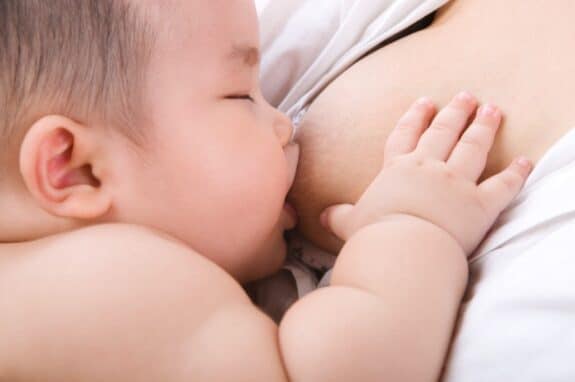Research has long suggested that breastfeeding can cut an infant’s risk of SIDS in half, but a new study shows that even just some nursing can help. In fact, the scientists found that just two months of breastfeeding, when combined with formula feeding, can give infants the same SIDS risk reduction as exclusively breastfed infants – and that’s something worth talking about!
Conducted by the University of Auckland in New Zealand, the new study included an analysis from eight case-control studies on 2,267 infants who had died from SIDS and 6,837 who did not. Each infant that died was paired with two that had survived, and then researchers looked back on their lives to see which ones had been breastfed, for how long, and if they did or did not have any other factors in common that could have contributed to their death. For example, they examined which infants had been exposed to soft bedding, which had been sleeping on their stomachs, and which had been exposed to cigarette smoke.
Overall, the researchers determined that breastfeeding for at least two months and up to four months – even if done in conjunction with formula – decreased an infant’s risk of SIDS by about 40 percent. Infants breastfed for four to six months saw a 60 percent reduction in their risk of SIDS, and infants nursed for six months or longer had a 74 percent decrease in their risk of dying from SIDS. Exclusive breastfeeding was found to be almost completely equal to those figures, with a 41 percent SIDS risk reduction at 4-6 months of nursing.
“This analysis does not reveal any advantage to exclusive breastfeeding over partial breastfeeding, which may be reassuring to some parents who cannot or do not wish to exclusively breastfeed their infant,” the authors wrote.
Parents who wish to reduce their child’s risk of SIDS through breastfeeding are encouraged to know what other factors contribute to the condition, as nursing alone does not completely eliminate an infant’s risk. Examples of such factors include crib bumpers, stuffed animals, and other soft items in the crib; loose clothing and blankets; exposure to environmental hazards, such as tobacco smoke; and genetic or biological conditions that may hinder the infant’s ability to wake up.







